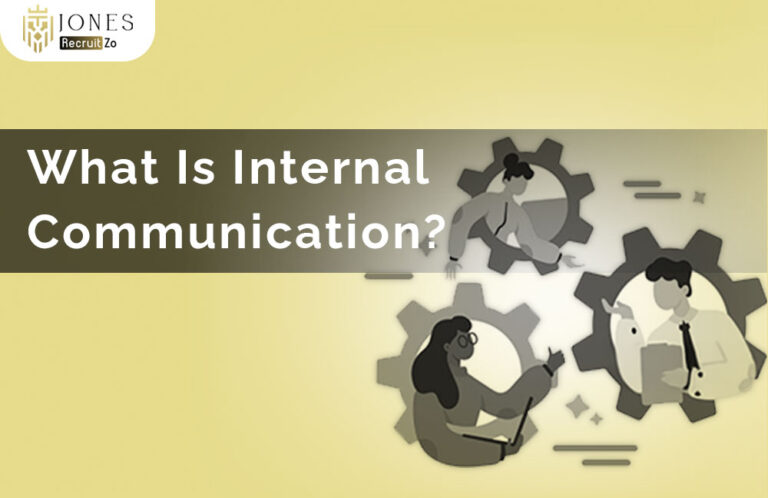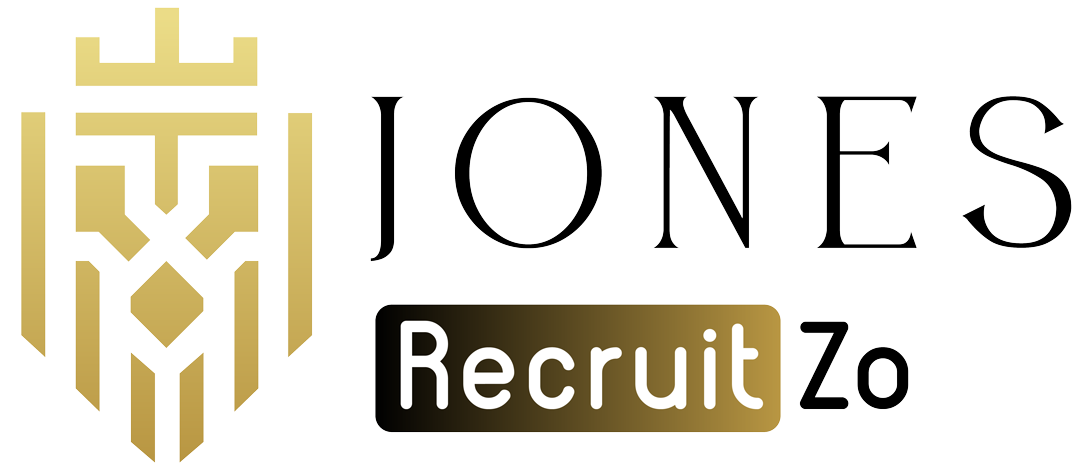What Is Internal Communication?
Internal communication is the movement of information within an organisation. It links the employees, sections, and leaders so that all are aware and coherent. Thoroughly understanding what internal communication is enables companies to establish clarity and an efficient workplace that supports effective work between teams.
Why Is Internal Communication Important?
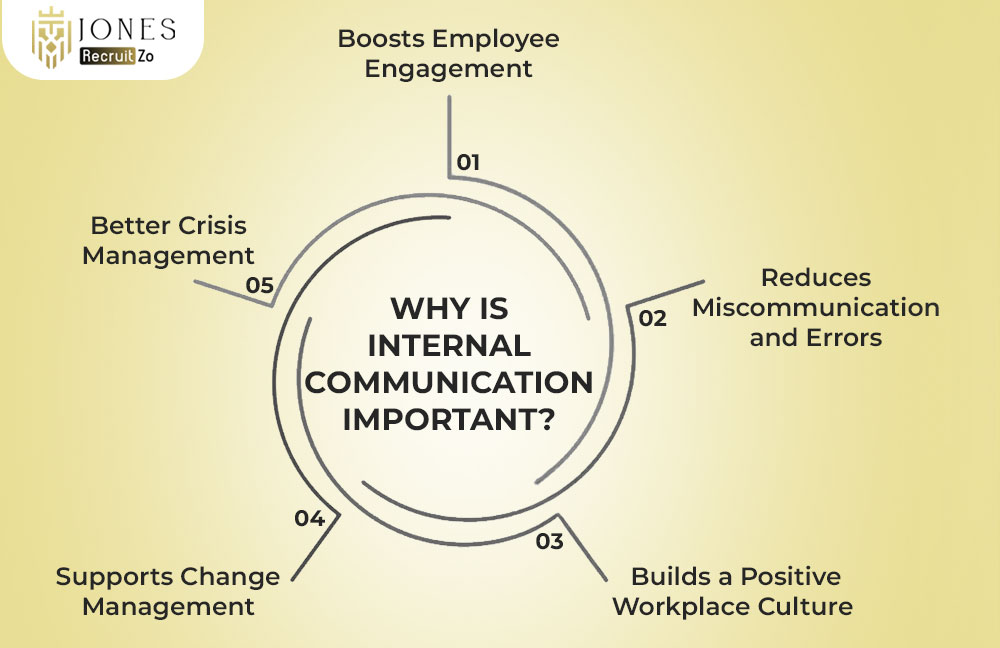
Good internal communication keeps the employees aware of the company information, inspired, and focused towards the company objectives. Its absence might result in teams not feeling connected and therefore being confused and unproductive. Transparency, growth, and the ability of organisations to meet their goals are promoted by a well-planned communications strategy.
Boosts Employee Engagement
Employees are more engaged when they are heard and when they know what is going on. Their engagement with the company is boosted by regular updates, team gatherings, and responses. This boosts morale and imparts a sense of meaning, which in the end will push performance and loyalty across the board.
Reduces Miscommunication and Errors
Particular communication forms like organised meetings and written updates are clear and avoid misunderstandings. This reduces the number of errors and increases productivity. By ensuring that the sharing of information is consistent and precise, employees would also be able to deliver their duties effectively without causing costly errors, hence leading to increased efficiency in the organisation.
Builds a Positive Workplace Culture
A positive work culture is generated in an organisation that has open communication. Input from leaders to employees makes them feel appreciated and keeps them in the loop. This builds strong trust, improves teamwork, and fosters a mutual environment where individuals work together voluntarily and help one another to develop.
Supports Change Management
Internal communication is an important factor during organisational change. In the process of transitions, employees require proper directions and frequent reminders to make it a smooth process. Explaining change in an open manner lowers the uncertainty, maximises the level of acceptance, and enables teams to adapt easily to the new process or expectations.
Better Crisis Management
During crises in the business, an effective communications strategy is required to manage the situation in the best manner possible. Panic and misinformation are reduced by clear and early updates. The employees are aware of what is expected of them, how they should handle the situation, and where they can seek precarious help; thus, the organisation can handle the situation without much disturbance to the flow of work.
Types of Internal Communication
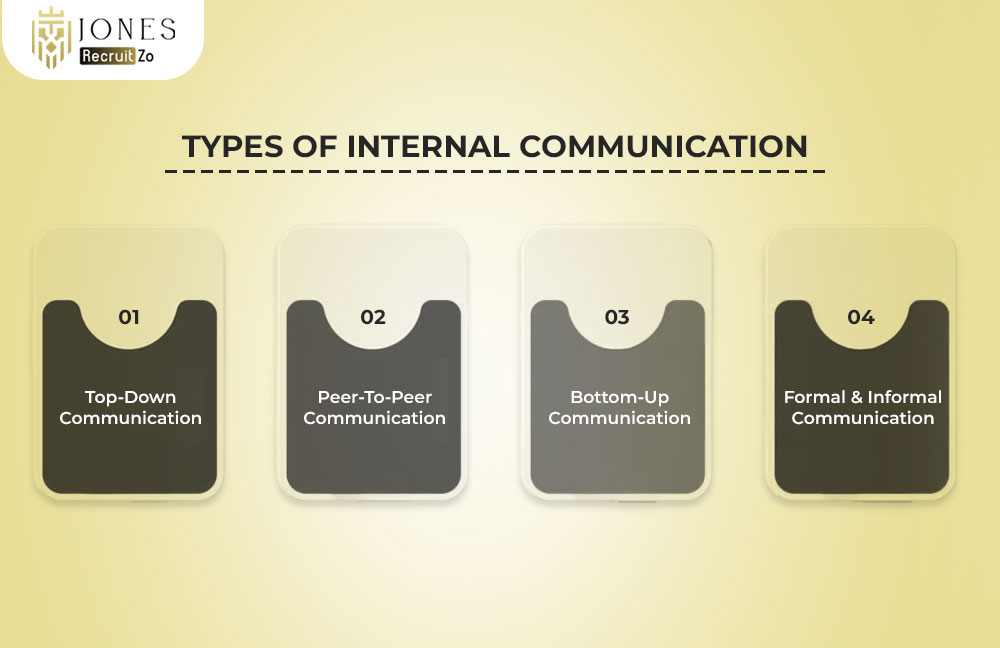
Knowing the types of internal communication also enables businesses to apply the appropriate mechanism to their teams. The integration of different forms of communication will help the organisations convey information to the employees effectively, either through official announcements, informal contacts, or online instruments.
Top-Down Communication
Top-down refers to communication between leadership and a worker. It contains company announcements, policy, and directions. This approach guarantees that any crucial information can be spread to all people and everything remains orientated toward a goal that is shared by the management and employees so that the whole organisation will be moving in one direction.
Peer-to-Peer Communication
The peer-to-peer communication occurs between colleagues of equal levels. It facilitates teamwork, problem-solving, and knowledge sharing. Promoting such communication will enhance a teamwork scenario and assist the employees in developing a relationship, thereby creating a more bonded, supportive, and output-effective workplace.
Bottom-Up Communication
Bottom-up communication can also be used whereby the employees will communicate feedback and ideas as well as concerns to the management. It encourages openness and creativity. When organisations empower the employees to have a say, then a culture of trust is created, and better organisational decisions are made by heeding the ideas of all the personnel.
Formal & Informal Communication
Organisational communication, both formal and informal, is important. Formal communication means reports, meetings, and emails, whereas informal chats and loose talks connect the relationships.A balance between the two will effectively direct information flow as well as keep a good, challenging workplace culture.
Effective Internal Communication Methods
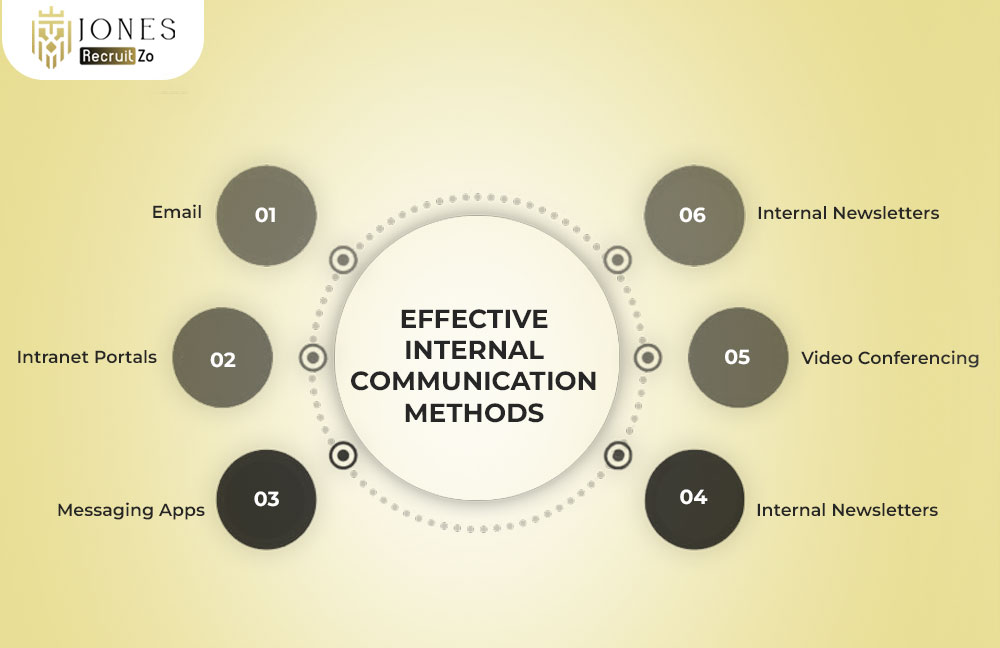
The selection of appropriate types of communication will make the message unequivocal, coherent, and easy to understand by all employees. By using different ways of communication, such as emails or video calls, sharing information, communicating, and being productive in the organisation would be increased no matter where a person is or how many people are in a team.
The email is still a dominant tool of internal communication. It enables ordered written communications that can be utilised easily. Constant updates on the newsletters, the policies, and the projects through emails keep the team members abreast and on track with the organisational objectives.
Intranet Portals
Intranet portals are the gathering points of news, resources, and updates of a company. They promote teamwork and ensure easy access to important information for the employees. An efficient intranet will make everyone productive and in touch with each other in large or distant teams.
Messaging Apps
There are messaging services (such as Slack or Teams) that allow informal messages to be sent and received quickly. They facilitate live group work, and it is convenient to exchange updates, pose questions, and find solutions within the team. Such tools are specifically helpful in remote or hybrid work situations.
Internal Newsletters
A regular internal newsletter helps to consolidate internal communication. These are used to update the company, company employee achievements, and make company announcements. Newsletters create a feeling of belonging to the community and guarantee that each employee is aware of what is happening, no matter where he/she works or what his/her department is.
Video Conferencing
Video conferencing is used to establish face-to-face communication between remote or distributed teams. It also establishes relationships, increases comprehension, and embraces teamwork. Frequent video conferences will make teams feel connected and in sync, even though they are not in one place or space in the world.
Difference Between Internal and External Communication
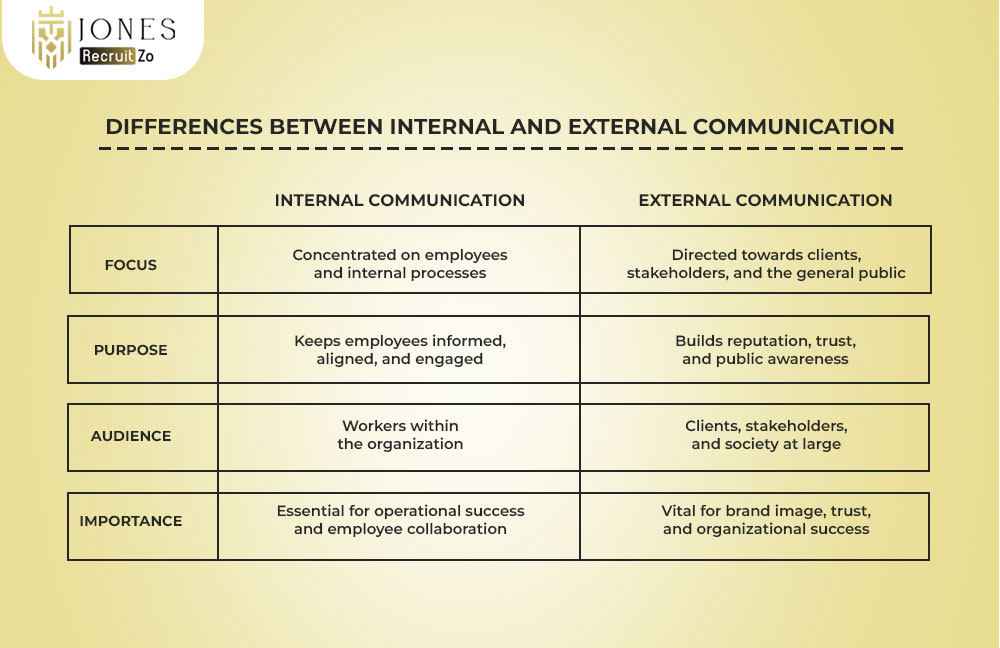
The knowledge of internal and external communication is essential to enterprises. Internal communication is concentrated on workers and processes, whereas external communication is directed to clients, stakeholders, and people in general. The two are vital in creating a reputation and trust and the success of the organisation.
Best Practices for Strong Internal Communication
Organisations need to adhere to established strategies for establishing good internal communication. This involves identification of suitable channels, promotion of feedback, and presentation of open, clear, and consistent messages. A good communications plan leads to transparency, engagement with employees, and a more solid, connected working environment.
Ensure Your Messages Reach Every Employee
Communication should be embraced by all employees irrespective of their position or location. Communicating through various forms of communication, including emails, intranet updates, meetings, etc., will ensure that everyone is informed about vital information and also up-to-date with company goals.
Encourage Two-Way Communication
Two-way communication allows employees to give their input and ideas. It creates a level of trust and helps the leaders to be aware of the issues of the workers. Establishing forums of communication, such as surveys or town halls, will assist an organisation in developing a healthy and accommodating, participatory and transparent work environment.
Use the Right Channels
Identifying the right communication channels shall be the most important element for the successful sharing of information. With emails, messaging apps, and video meetings, a proper combination of channels will guarantee clarity, accessibility, and acceptance of messages, resulting in teamwork and a decrease in misunderstandings.
Provide Training
The practice of internal and external communication among employees would be clear and consistent since they would be trained on the same. It equips the teams with knowledge on the importance of sharing information, overcoming misunderstandings, and developing a culture of workplace communication where each individual speaks with confidence and in a businesslike manner.
Avoid Communication Overload
Keeping employees informed should be the key too, but sometimes it may be too much information. Little messages that are not necessary should be avoided, and the right communications strategy can keep people focused and increase engagement levels as well as make sure that critical information is captured and remembered by all.
FAQs
1) What Is Internal Communication?
Internal communication is the ability to share information within an organisation. It maintains contact with employees and communicates with them through employee meetings, emails, and the intranet, and by any means possible.
2) Why Is Internal Communication Important?
Internal communication establishes trust and is employee-engaging and helps everyone to know what the objective of the company is. It clears the confusion, enhances teamwork, and facilitates effective decision-making, which enables organisations to be productive and resilient.
3) What are the types of internal communication?
The types of internal communication can be divided into top-down, bottom-up, peer-to-peer, formal, and informal communication. An amalgamation of these provides a definitive, coherent flow of information to every team.
4) What are the most effective tools for internal communication?
Good examples of internal communication include email, the intranet, messaging software, video conferencing, and internal newsletters. The appropriate selection of tools will help in the smooth flow of information, cooperation between workers, and involvement of the employees.



